Ghost Recon Wildlands is a strange game that feels more like the errant love-child of Just Cause 3 and The Division than any previous title in the Ghost Recon franchise, but unfortunately it doesn’t pull off the best parts of either title.
That’s not to say Wildlands can’t be a lot of fun, because it definitely can. With a group of like-minded brothers in arms, one can get up to all sorts of wacky co-op shenanigans. I just wish developer Ubisoft Paris had either doubled down on expanding the game’s fun gameplay options or crafting a more meaningful story. Instead, they ended up with a good game that falls short of being anything more than a temporary diversion because it takes no risks and whose technical failures feel all the more egregious because there is so little ambition to account for them.
Wildlands revolves around covert U.S. military intervention by the elite special operators of the fictional Ghosts team in Bolivia. The country has been taken over by the cartel/cult hybrid Santa Blanca, who have successfully penetrated just about every conceivable area of Bolivian life. You will traverse the game’s large open-world map, completing missions to aid the rebel resistance and eliminate the biggest players in Santa Blanca’s hierarchy. Their operations are divided into four categories: Influence, Production, Security, and Smuggling.
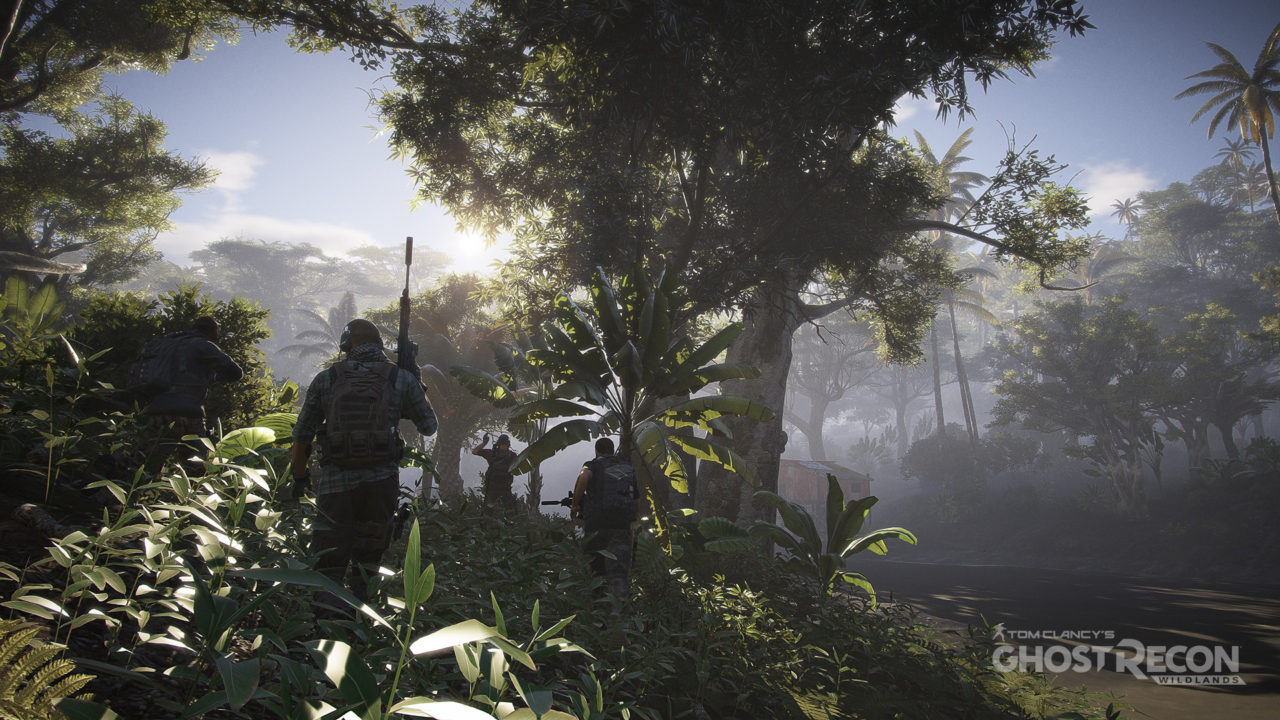
The gameplay is pretty typical cover-based third-person shooter fare, augmented by a progression system that combines earned or found skill points with various collectible resources. While you control the way your characters advance, eventually every operative ends up with every skill, so there’s no long-term reason to be careful about what skills you purchase. Filling out a skill tree will net you an “epic skill,” such as increased power for your explosive devices.
Additionally, you will collect both weapons and modifications, allowing you to customize your loadout for various roles. There are dozens of assault rifles, LMGs, submachine guns, sniper rifles, and pistols scattered across the Bolivian landscape for you to find, and more are acquired as rewards for completing missions. As an aside, there are a startling amount of both weapons and customization options locked behind the game’s hefty $40 Season Pass. The game has enough variation without them, but it’s disappointing to see basic content locked behind a minimum $100 overall purchase.
Wildland‘s graphics are passable for the most part, and the vast landscapes can even be beautiful from a distance and in the right light. They just don’t hold up under scrutiny. Where the landscape textures don’t literally break, both flora and buildings are endlessly repeated.
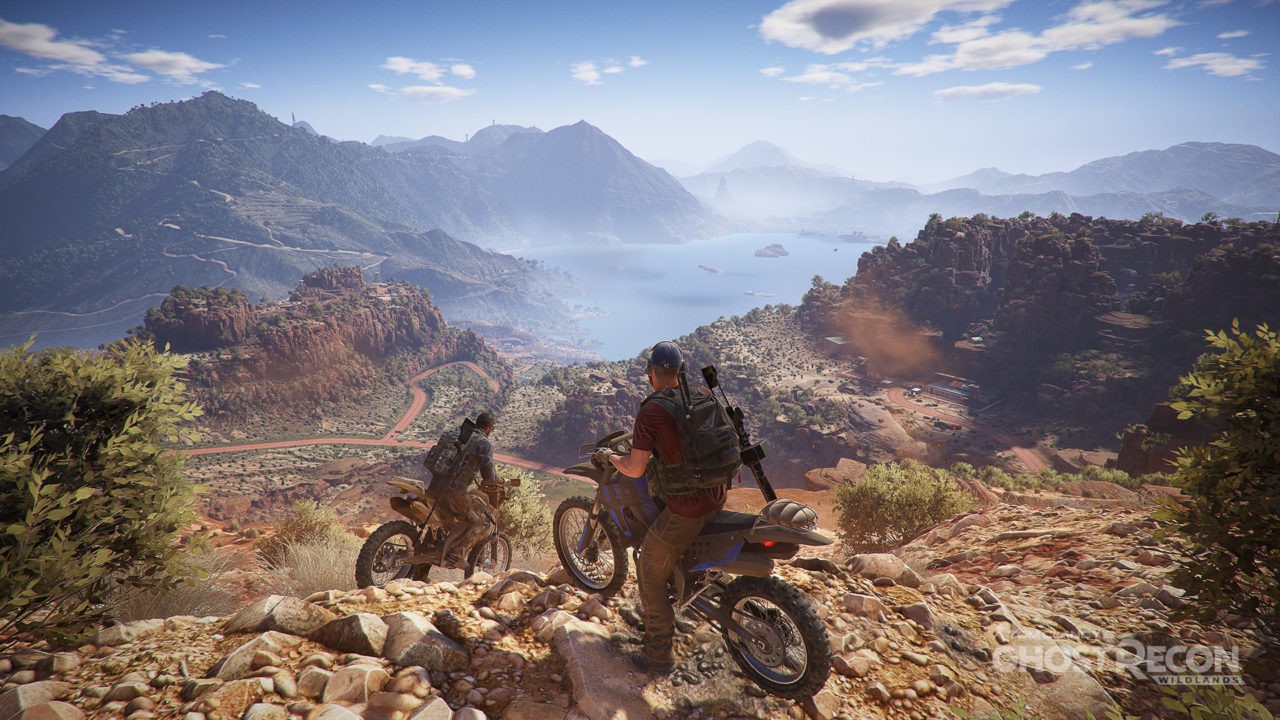
The sound work is also passable but similarly inconsistent. The various weapons sound okay, but the voice acting throughout the entirety of the game ranges from bland to grating. Even as a source of basic information, it’s difficult to praise. Conversations are constantly interrupted by others, as your travel invariably triggers filler dialogue on top of mission tlines, or area commentary on top of that. I’ve heard a conversation about using quinoa to disguise cocaine shipments no less than 14 times (I started, then stopped counting) for no immediately apparent reason, regardless of where I was and what I was doing.
The game’s physics are laughably bad, both on the ground and in the air. They are fun in the “what the heck is this car going to do next” sense, but not so much in the enjoyable-way-to-move-between-points sense for which they presumably exist. It’s hard not to get swept up in the hilarity of vehicles rocketing into the sky, or helicopters whose rotors don’t turn, and passengers who are animated swimming beneath the road below, instead of sitting in the cockpit, but those are laughs had at the game’s expense, rather than its behest.
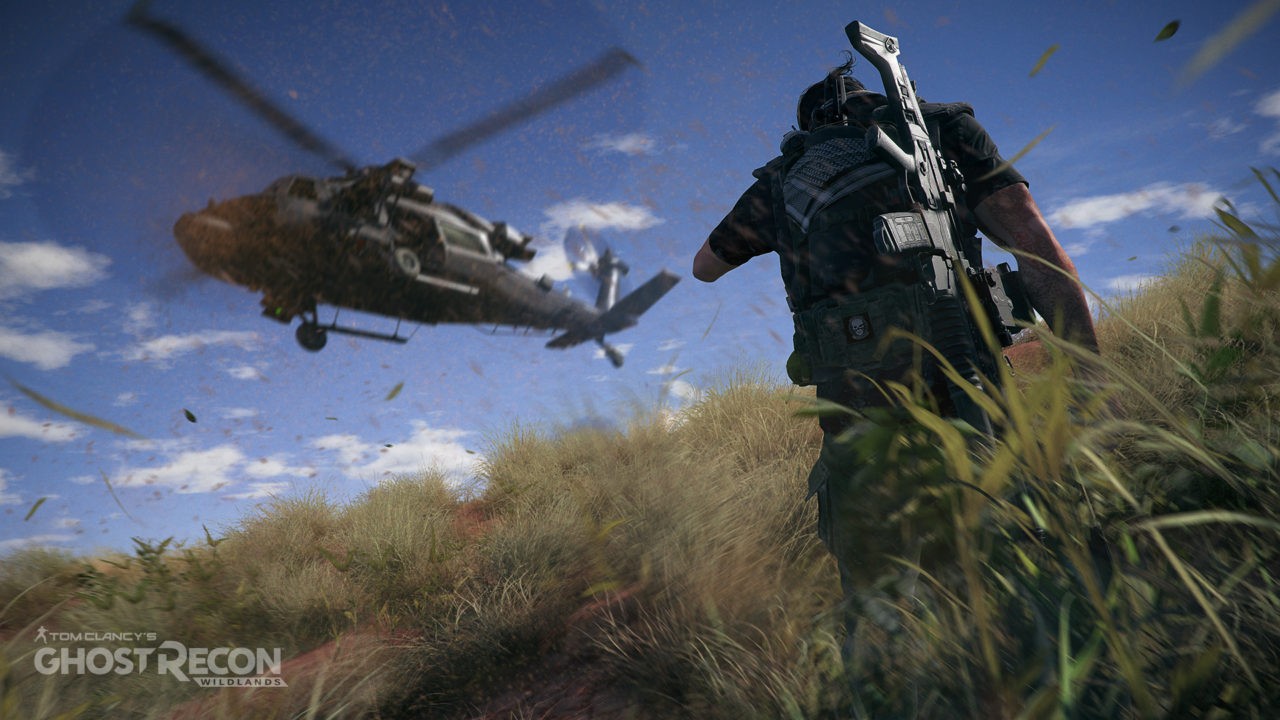
I’m not sure I can criticize Wildlands’ artificial intelligence, because I remain unsure that any was programmed into the game. In the vast majority of instances, enemies are little more than mobile turrets of machine gun fire and frequently fail to intelligently navigate even the most elementary architecture in the environments. That isn’t uncommon in open world settings, but it is an additional disappointment in a game that also lacks any real mission variety.
Every assignment boils down to: travel somewhere in the open world, then activate an object, kill a specified target, or destroy something. You can add your own flair to the proceedings by how you choose to approach these set-ups, but mission scripts are skeletal at best. On one hand, that can make the experience a flexible one. On the other, it means that without colored markers, it’s virtually impossible to distinguish a major story mission from a random resource collection sidequest. All of the content feels identical, from the beginning until the end.
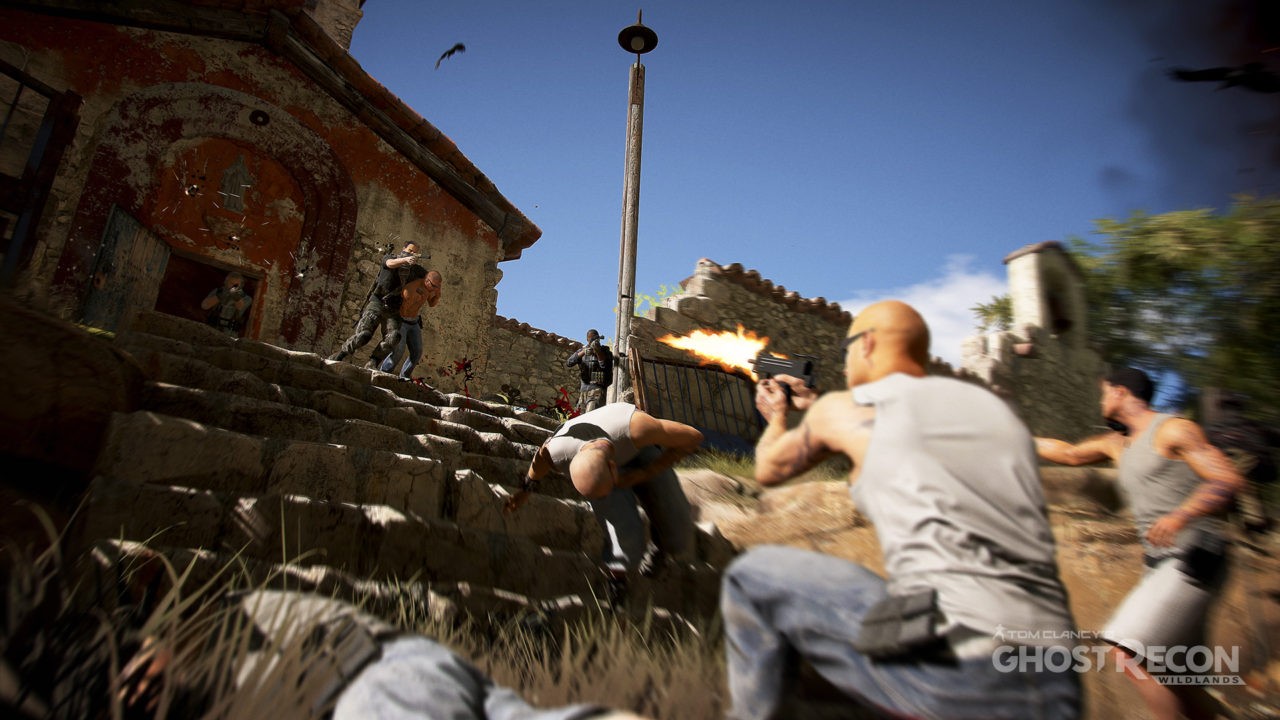
As a result, the game’s progression system is a constant headache. Without any mission structure, players tend to just make a run to whatever is closest. Understanding your progress in comparison to your allies is virtually impossible, so everyone spends a lot of time replaying missions. And since you receive credit for anything completed in the same instance as you, it’s very easy to miss major story content because someone ran off to a different region or activated a nearby mission you haven’t yet reached. It makes the almost nonexistent story even harder to follow. Sadly, that story doesn’t seem to matter anyway.
The game’s enjoyment comes primarily from your ability to improvise. With remote-controlled drones, vehicles, explosives, and other live players in the mix, there are all sorts of ways to accomplish a given objective. As the difficulty ramps up in some of the more advanced areas, that creativity is required to avoid being gunned down by countless grunts packed into each mission area.
Fair warning: You do not want to play this game on your own. The only AI worse than the enemies is that of your placeholder allies, and playing alone is the rough equivalent of World of Warcraft as a solo experience with braindead bots at your side. Without the unpredictable creativity of human cohorts playing cooperatively, the game devolves into a by-the-numbers shooting gallery on a very big stage.

Of course, it’s an open-world Ubisoft game, so there are enough icons pointing you to areas of interest on the map to obscure a significant portion of the topography. Objectives, collectibles, and places of interest dot the map so liberally that I frequently needed to zoom all the way in just to click one that was obscured by several others. The HUD minimap isn’t quite so bad, and the glowing orange area designating enemy presence without specific points given until the area is scouted was a smart move, encouraging the use of binoculars, drones, or sniper scopes to identify threats before moving in.
Wildlands is very much a “make your own fun” experience. It has neither the freedom of Just Cause 3‘s grappling hooks and wanton destruction, nor the narrative intensity and desperate atmosphere of The Division‘s frosty New York streets. What it does offer is a little bit of both: It is a highly traversable, completely open-ended excursion into cooperative multiplayer that shines when everyone is working together.
Follow Nate Church @Get2Church on Twitter for the latest news in gaming and technology, and snarky opinions on both.
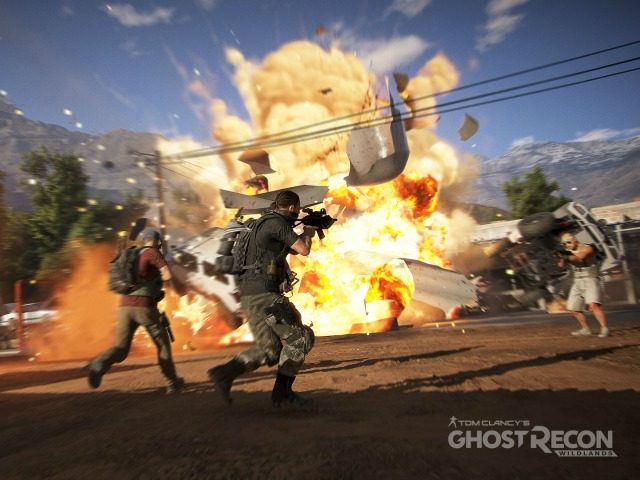
COMMENTS
Please let us know if you're having issues with commenting.